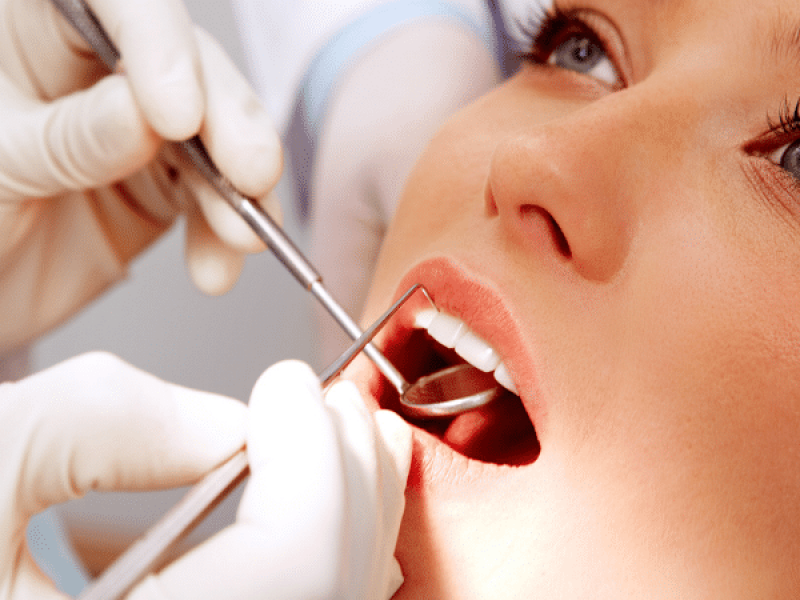3D Treatment with DVT Device!
Dental volumetric tomography is an imaging method that takes a cross-sectional view of the area to be examined. With this method, the details that cannot be seen on the normal film can be seen from every angle, the desired treatment is performed and your mouth and dental problems can be easily solved.
Dental tomography, also known as DVT, provides a great benefit for treatment planning in dental and jaw diseases, dental implant applications and maxillofacial trauma by providing 3-dimensional imaging instead of 2-dimensional imaging methods. It is preferred because of its detailed diagnosis possibilities in dental and jaw pathologies.
Dental Tomography Usage Areas
Dental volumetric tomography is the most advanced imaging system that provides 3-dimensional imaging of the lower and upper jaw, giving much less radiation than computed tomography. It is the ideal method for pre- and postoperative imaging of impacted, displaced teeth, jaw cysts, cleft palate, trauma cases, important anatomical markers and structures. Also it is used for :
- Implant planning and retrieval
- Determination of bone thickness and tissue condition
- Determination of distances to mandibular canal or sinus floor
- Root canals configuration and appearance
- Root canal measurements
- Detection of anatomical deviations and unusually large root canals
- Shaping the roots
- Anatomical situation, relationship between teeth
- Periodontal ligament (ancylosis).
How Is Dental Volumetric Tomography Applied?
While performing volumetric tomography, a special removable prosthesis is prepared with the measurement taken from the patient and the patient's tomography is taken with this prosthesis. The application using the 3D imaging device is very short and fast. Radiation intake is much less in DVT device compared to computed tomography (CT). While you have to wait for a long time in a closed device for CT, you can take the DVT in 1 minute by sitting.
Dental volumetric tomography provides detailed information on bone thickness and size, especially for implant treatment. It is not necessary to cut the gingiva, mucous membranes to see the bone. Because the sections of the bone are seen from all angles on the screen. Thus, applications are completed with less margin of error. Since the treatment plan is made faster, the patients can return to their normal life in a short time.
What are the Advantages of Dental Volumetric Tomography (DVT)?
Dental Volumetric Tomography (DVT) is a low cost and low radiation application. It is easily used before almost every tooth and jaw operation. In addition, it is applied more easily in those with claustrophobia. Since the image quality and resolution are very good, it facilitates the detection of the disease. Volumetric tomography, which enables visualization of areas that cannot be monitored with panoramic and periapical x-rays, increases the success of the operation and shortens the time.
Sensitive organs such as thyroid gland and cataracts are protected from radiation when the rays reach only the target area. It will be better to contact your dentist for dental volumetric tomography price information and how to have dental volumetric tomography, which clarifies the treatment decision process.







Every Word You Share Matters to Us
Your feedback means the world to us. We're truly grateful for your support, your trust, and every suggestion that helps us become better. Thank you for being part of our journey.
Well I have just visited and had my first phase of treatment,throughout the process ,I have been in contact with Arina who has guided me throughout the process ,with prices,hotels,transfers and any questions I needed answering ,I came off the plane and my transfer was waiting for me to take me to hotel,I stayed at the La Marge,a lovely hotel and the staff couldn’t have done anymore,very friendly and always helpful,day 1 I was picked up in the morning by the transport and met by the lovely Anya who put me at ease straight away,day 1 is exhausting but getting most of it all done is the best way,I left there sore and a bit swollen,but had all the antibiotics,painkillers,mouthwash,ice packs to help,personally I went back straight to sleep and woke up in the morning,it was a lot better,all the staff at Tulay are first class,the cleanliness and professional manner in which they all shown was amazing,i want to thank them all and see you in September for Phase 2
I must say that the whole process is completely digital. First, they take your 3D jaw tomography and explain everything in detail, you get all the info about the process before your treatment. For mouth impressions, they use a 3D scanner which is one of the best ones (believe me I researched a lot about these things while choosing a clinic). They also have their own lab and your crowns are done there, that’s why everything s done super fast! I enjoyed my experience at Akkol Dental
Big shoutout to Anya! As a foreigner, communication is key, and Anya made everything clear and easy, she explained the process from start to finish and I felt safe at this place. Doctor Adnan did my crowns and the result was fantastic!
I was verry happy for this company the staff was sweet and proffesinelt. I pay 1.750€ for 12 crowns take € hvis you for the payment Regards Detlef Otto Denmark
I came to Antalya to get zirconia crowns, and I’m beyond happy with the results! Coordinator Arina was incredibly helpful from start to finish, she explained every step of the process, helped me with transportation, and made sure I was comfortable the entire time. Dr. Rifat is a true artist, he carefully designed my new smile, and my crowns look very natural and beautiful. The procedure was painless, and the clinic’s technology is top-notch. Now I can smile with confidence again! Highly recommended
Highly recommend clinic Tülay Akkol, professional approach of doctors! In love with my new smile. Tnaks to all the doctors and staff!
Where do I start? I would like to extend my gratitude to Arina and all the crew at Tulay Akkol dental centre. Arina was absolutely fantastic throughout the entire process and really excelled in great customer service. From the moment I arrived in Turkey with my family the transfer to the hotel was smooth and stress free. The hotel we stayed in was fantastic and the staff there were lovely. I personally would like to thank the dentist for excellent work and for being very patient and understanding. I can't speak highly off Tulay Akkol and the fantastic treatment I received for my smile makeover. Arina, you are a star and thank you for everything.
I came to the clinic to make my implants and crowns. Everything went really smoothly, the doctors are super professional, the hotel and translator is a top notch Greatly recommend best clinic in Antalya. Looking forward to my next visit thank you
Very pleasant visit. Office atmosphere is professional, staff is very friendly. Definitely recommend.
Had a really great experience with Tulay akkol , would definitely recommend!! Really love my new teeth :)